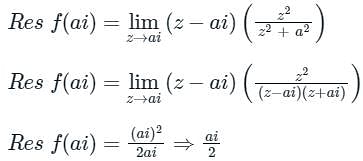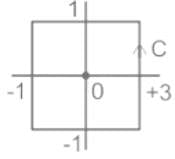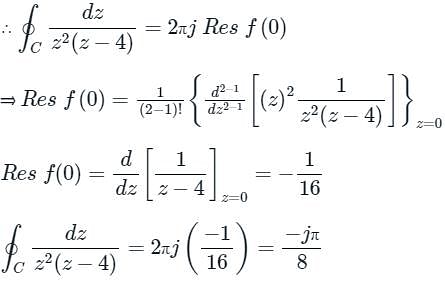Civil Engineering (CE) Exam > Civil Engineering (CE) Tests > Engineering Mathematics > Test: Residue Theorem - 2 - Civil Engineering (CE) MCQ
Test: Residue Theorem - 2 - Civil Engineering (CE) MCQ
Test Description
5 Questions MCQ Test Engineering Mathematics - Test: Residue Theorem - 2
Test: Residue Theorem - 2 for Civil Engineering (CE) 2024 is part of Engineering Mathematics preparation. The Test: Residue Theorem - 2 questions and answers have been
prepared according to the Civil Engineering (CE) exam syllabus.The Test: Residue Theorem - 2 MCQs are made for Civil Engineering (CE) 2024 Exam. Find important
definitions, questions, notes, meanings, examples, exercises, MCQs and online tests for Test: Residue Theorem - 2 below.
Solutions of Test: Residue Theorem - 2 questions in English are available as part of our Engineering Mathematics for Civil Engineering (CE) & Test: Residue Theorem - 2 solutions in
Hindi for Engineering Mathematics course. Download more important topics, notes, lectures and mock
test series for Civil Engineering (CE) Exam by signing up for free. Attempt Test: Residue Theorem - 2 | 5 questions in 15 minutes | Mock test for Civil Engineering (CE) preparation | Free important questions MCQ to study Engineering Mathematics for Civil Engineering (CE) Exam | Download free PDF with solutions
Detailed Solution for Test: Residue Theorem - 2 - Question 1
Detailed Solution for Test: Residue Theorem - 2 - Question 2
| 1 Crore+ students have signed up on EduRev. Have you? Download the App |
Detailed Solution for Test: Residue Theorem - 2 - Question 3
Test: Residue Theorem - 2 - Question 4
Let (-1 - j), (3 - j), (3 + j) and (-1 + j) be the vertices of a rectangle C in the complex plane. Assuming that C is traversed in counter-clockwise direction, the value of the countour integral  is
is
Detailed Solution for Test: Residue Theorem - 2 - Question 4
Detailed Solution for Test: Residue Theorem - 2 - Question 5
|
65 videos|120 docs|94 tests
|
Information about Test: Residue Theorem - 2 Page
In this test you can find the Exam questions for Test: Residue Theorem - 2 solved & explained in the simplest way possible.
Besides giving Questions and answers for Test: Residue Theorem - 2, EduRev gives you an ample number of Online tests for practice
|
65 videos|120 docs|94 tests
|
Download as PDF


 Then
Then





 is a residue at z = ia of f(z)
is a residue at z = ia of f(z) for z = ia is
for z = ia is





 f(z)dz = 2πi × [sum of residues at the singualr points with in C]
f(z)dz = 2πi × [sum of residues at the singualr points with in C]







 is
is


















